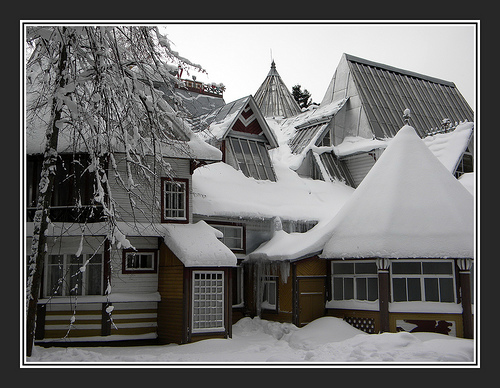A Part By Part Guide To Winterizing Your Home’s Exteriors
Winters are the real test of your home’s strength. While we do believe that, we don’t think it’s a very wise idea to actually put that theory into practice. The smarter thing to do is just winterize your home, especially the exteriors; because one, they’re the first line of defense and two, – because hey, prevention is always better than cure. Now, when it comes to the whole house, it may seem like a lot of work to do, and figuring out exactly where to start or what areas to cover and how can be quite challenging.
We try to make it easier for you, with our simple part by part guide of what to check and how to check.
The Roof
The roof is your underrated little hero. It takes all the beating down but hardly gets any attention. This can be quite dangerous in the winters, especially in areas prone to heavy snowfall. Accumulated snow can weigh too heavily on your roof and result in some pretty dangerous accidents. You can prevent this by simply grabbing a ladder and a good magnifying glass, probably. Look closely for any faults or inconsistency in shingles, like cracks and curls. In addition, also check whether any shingles are missing, loose or damaged. Make sure the roof is kept spic and span; clear away any twigs, dried leaves, etc. Don’t ignore the metal flashings and the caulking. Anything of metal up there, it has to free from even the slightest signs of corrosion. If you have a chimney, take a look at the mortar and bricks, if anything is missing or is loose.
Drainpipes and gutters
You know how the seemingly trivial things tend to snowball into a giant mass of disaster? Yes, drainpipes and gutters form crucial players in that theory, when it comes to your home. Free flowing drainpipes are absolutely necessary. As long as the drainpipes and gutters on the roof are working to perfection, your ground remains clean and dry, which is turn keeps your interior floor and basement dry.
Grading
Firstly, make sure that all the slopes are directed AWAY from the home, so that the foundation remains unaffected. A healthy and strong grading translates into a healthy and leak-proof basement. While it won’t undergo much damage when it’s cold, it’s when the snow is melting that problems arise. In addition to the direction of the sloping, you keep an eye on its overall condition too.
Windows
It’s easy to spend our lives thinking that nothing is wrong with the windows and doors. Just because they seem to be fully covered and close and open fairly well, doesn’t mean they don’t need any attention. Clean up the windows and the doors– from the inside as well as outside. Touch and feel the caulking- especially around areas where the wall has been penetrated. It’s one simple act that goes a long way in saving your energy bills.
Landscaping
In the rush to get your house warmed up, don’t forget the landscaping, which takes the most brutal of beatings. In order to keep your trees healthy, mulch them regularly; make sure the soil hasn’t frozen. The best trick to an evergreen landscaping is to plant perennials. In addition to these, check your pipes, insulate them with foam sheets so they don’t freeze and burst. Check your tools and irrigation system. Keep the machinery clean and well-oiled.
Winters may vary from location to location, but these basic precautions are pretty standard everywhere. And the best part? These little fixes are absolutely easy and more often than not, won’t even require a professional. Happy winters!
The author of this article, Colleen Smith, is an interior designer currently working at Sidetex, leading providers of vinyl replacement windows in Connecticut. In her spare time, Colleen likes to play video games with her son, Jason.

